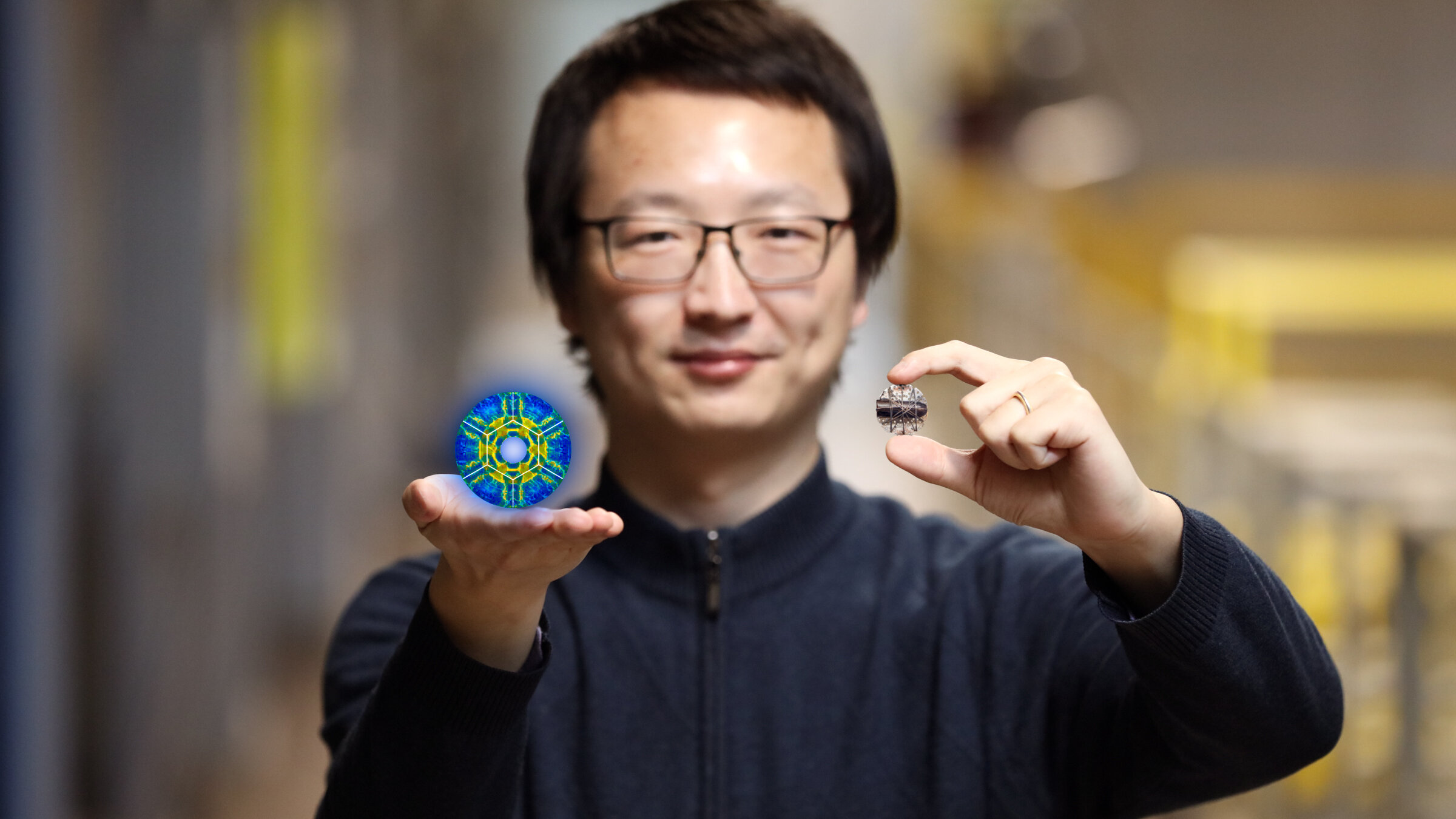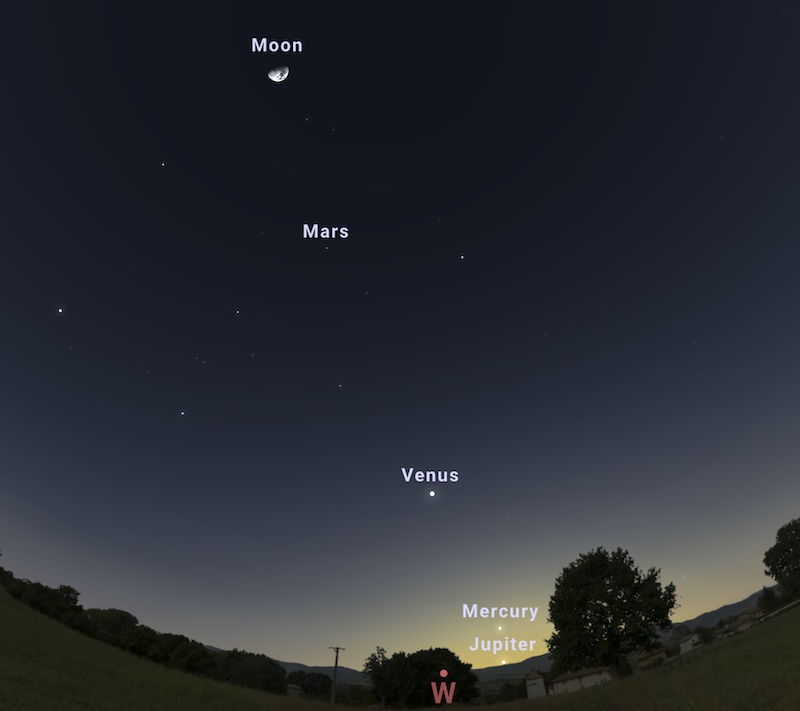Koncepcja artysty „Pochodzenie życia”.
Pierwsze odkrycie wirusów infekujących grupę drobnoustrojów, które mogą obejmować: Złożone życie przodków Znaleziono naukowców z University of Texas w Austin (UT Austin) Raport w Mikrobiologia przyrody. Zdumiewające odkrycie dostarcza kuszących wskazówek na temat pochodzenia złożonego życia i sugeruje nowe kierunki badania hipotezy, że wirusy były niezbędne dla ewolucji ludzi i innych złożonych form życia.
Istnieje dobrze poparta hipoteza, że wszystkie złożone formy życia, takie jak ludzie, rozgwiazdy i drzewa, które charakteryzują się komórkami z jądrem i nazywane są eukariotami, powstały, gdy Archeony i bakterie łączą się, tworząc organizm hybrydowy. Najnowsze badania Sugeruje się, że pierwsze eukarionty są bezpośrednimi potomkami tak zwanych archeonów Asgardu. Najnowsze badania, przeprowadzone przez Iana Rambo (byłego doktoranta na Uniwersytecie w Austin) i innych członków Brett Baker Laboratory, również podkreślają rolę wirusów w tej miliardowej historii.

Porównanie wszystkich znanych genomów wirusów. Te wirusy o podobnych genomach są zgrupowane razem, w tym te, które infekują bakterie (po lewej) i eukarionty (po prawej, środkowy i dolny). Wirusy infekujące archeony Asgardu są unikalne od wcześniej opisanych. Źródło: Uniwersytet Teksasu w Austin
„Badanie to otwiera drzwi do lepszego rozwiązania problemu pochodzenia eukariontów i zrozumienia roli wirusów w środowisku i ewolucji archeonów Asgardu” – powiedział Rambo. „Istnieje hipoteza, że wirusy mogły przyczynić się do powstania złożonego życia komórkowego”.

Naukowcy z UT Austin wykorzystali łódź podwodną Alvin do zbierania próbek osadów i drobnoustrojów z głębokości 2000 metrów (6600 stóp) w Zatoce Kalifornijskiej. Źródło: Brett Baker
Rambo wskazuje na kontrowersyjną hipotezę zwaną tworzeniem wirusowych eukariontów. Sugeruje, że oprócz bakterii i archeonów wirusy mogły przyczynić się do rozwoju eukariontów. Chociaż to ostatnie odkrycie nie rozstrzyga tej kontrowersji, dostarcza interesujących dowodów.
Niedawno odkryte wirusy infekujące żywe archeony Asgardu mają pewne cechy podobne do wirusów infekujących eukarionty, w tym zdolność do ich transkrypcji.[{” attribute=””>DNA and hijack protein modification systems of their hosts. The fact that these recovered Asgard viruses display characteristics of both viruses that infect eukaryotes and prokaryotes, which have cells without a nucleus, makes them unique since they are not exactly like those that infect other archaea or complex life forms.
“The most exciting thing is they are completely new types of viruses that are different from those that we’ve seen before in archaea and eukaryotes, infecting our microbial relatives,” said Baker, associate professor of marine science and integrative biology and corresponding author of the study.
The Asgard archaea, which probably evolved more than 2 billion years ago and whose descendants are still living, have been discovered in deep-sea sediments and hot springs around the world, but so far only one strain has been successfully grown in the lab. To identify them, scientists collect their genetic material from the environment and then piece together their genomes. In this latest study, the researchers scanned the Asgard genomes for repeating DNA regions known as CRISPR arrays, which contain small pieces of viral DNA that can be precisely matched to viruses that previously infected these microbes. These genetic “fingerprints” allowed them to identify these stealthy viral invaders that infect organisms with key roles in the complex origin story of eukaryotes.

Researchers from UT Austin used the Alvin submersible to collect sediment samples and microbes from 2000m (6600 feet) deep in the Gulf of California. Credit: Brett Baker
“We are now starting to understand the implication and role that viruses could have had in the eukaryogenesis puzzle,” said Valerie De Anda, a research associate at UT Austin and co-author of the study.
Reference: “Genomes of six viruses that infect Asgard archaea from deep-sea sediments” 27 June 2022, Nature Microbiology.
DOI: 10.1038/s41564-022-01150-8
The other co-authors of the study are Pedro Leão, a postdoctoral research fellow at UT Austin, and Marguerite Langwig, formerly a master’s student at UT Austin and currently a doctoral candidate at the University of Wisconsin-Madison. This work was supported by the Moore and Simons Foundations.

„Podróżujący ninja. Rozrabiaka. Badacz bekonów. Ekspert od ekstremalnych alkoholi. Obrońca zombie.”




